What's inside
Certain muscle groups enjoy being trained frequently. People strive for a big chest, wide back, and sleeve-filling biceps, while others get left behind.
The forearms are one of those forgotten muscle groups. This is an issue not only for our training in the gym but for many aspects of life.
One popular method for those who do train their grip musculature is with grip training devices.
These tools are used alongside exercises such as carries and hangs to develop a functional, vice-like grip in a select few.
So, what are the benefits of hand grip exercises?
The major benefits of training for grip strength include:
- Build formidable forearms
- Reduce risk of injury
- Become functional for life
- Lose the limiting factor
- Develop serious sports skills
- Squeeze out stress
- Gain impressive vascularity
This article will explore these benefits in detail. We’ll also provide tips on equipment, exercises, and training routines for developing amazing grip strength.
What muscles do hand grips work?
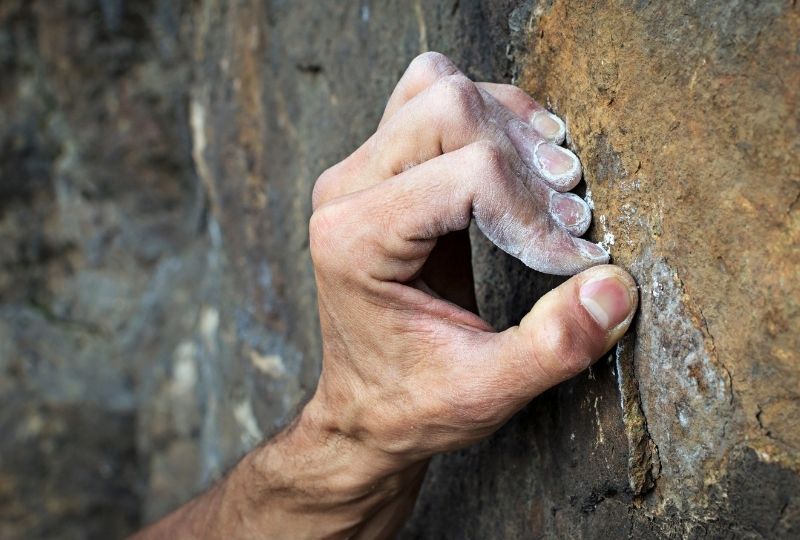
There are over 30 muscles working in concert in the forearm and hand. They perform many of the movements necessary for a strong grip.
The major muscle groups include superficial wrist flexors, wrist extensors, supinators, and pronators.
In the hand, the muscles of finger and thumb flexion, adduction, and opposition work alongside the deeper intrinsic hand muscles when gripping objects.
Types of Grip
While you may think of grip strength as one thing, the many muscles of the hand and forearm create the ability to perform many types of grip.
These allow us to perform the wide range of fine motor tasks needed for life as human beings.
The different types of grip include:
- Precision pinch: Holding a needle
- Oppositional pinch: Holding a card
- Key pinch: Holding a key
- Directional grip: Holding a screwdriver
- Hook grip: Holding a suitcase handle
- Power grip: Holding a tennis racquet
- Span grasp: Holding objects like a ball
7 Benefits of Hand Grip Exercises
The following are some of the major benefits of performing regular handgrip exercises.
1. Build formidable forearms.
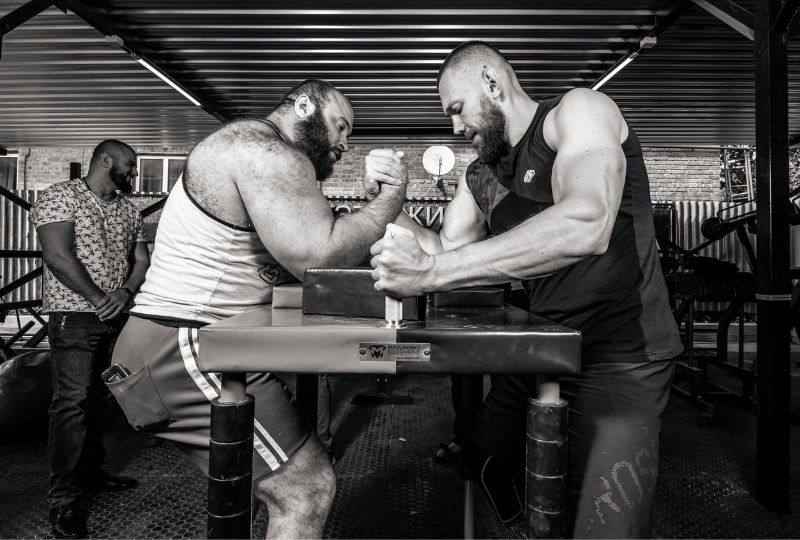
The forearms are one of the most neglected muscle groups in the gym.
This has always confused me personally, as the forearms are the only muscle groups that are almost always visible, even in most clothes.
Along with the neck and calves, the forearms might be a huge area of untapped potential in your training, even for those advanced lifters who’ve been training for years.
If you’re looking for more information about building up these lagging muscle groups to look stronger and more muscular, check out our guide on bear mode training.
2. Reduce risk of injury.
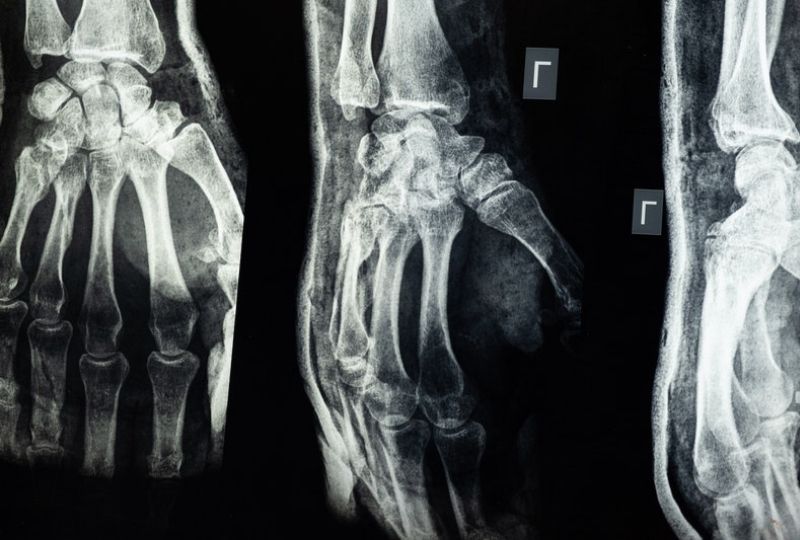
Weakness in the many muscles of the forearms can lead to an increased risk of overuse injuries in the wrist or elbows.
Common conditions and injuries include carpal tunnel syndrome in the wrist, De Quervain’s Tenosynovitis in the thumb, tennis elbow, and many more.
By performing grip strengthening exercises regularly, you not only increase the strength and endurance of your muscles, but of the tendons, ligaments, and other supporting tissues in the hand and wrist.
If you sustain a chronic injury – or even an acute injury like a sprain or fracture – grip strengthening is also one of the first strength exercises you’ll perform in a rehabilitation program.
3. Become functional for life.
While grip strength is a great thing to have in the gym and day to day, it becomes a critical factor in maintaining independence later in life.
Grip strength is used clinically as one of the predominant methods of testing upper body strength and overall functional ability.
If your hand grip is sufficiently strong, you can perform many daily living tasks, whether it be carrying grocery bags, opening jars, or pulling yourself up after a fall.
On the other hand (pardon the pun), a lack of grip strength typically correlates with decreased independence and the ability to perform many functional tasks.
So if you’re currently skipping your forearm training now, you may want to start incorporating it into your routine. Your future self will thank you.
4. Lose the limiting factor.
Coming back to the present, we need to train grip strength not only for the hands and forearms themselves but also for maximal performance in many other areas of training.
If you’ve ever been testing your 10RM deadlift, trying to beat your PB for pull-ups, or pushing hard on a rest-pause set of heavy shrugs, you’ve likely had to finish the set due to your grip failing.
A lack of grip strength can be the limiting factor in many types of training and activity, whether in the weight room, on a rock-climbing wall, or in an arm-wrestling match (if you’re into that).
By adding specific grip strength exercises into your training routine, losing your grip will never be the thing that stops you from breaking through training plateaus.
5. Develop serious sports skills.
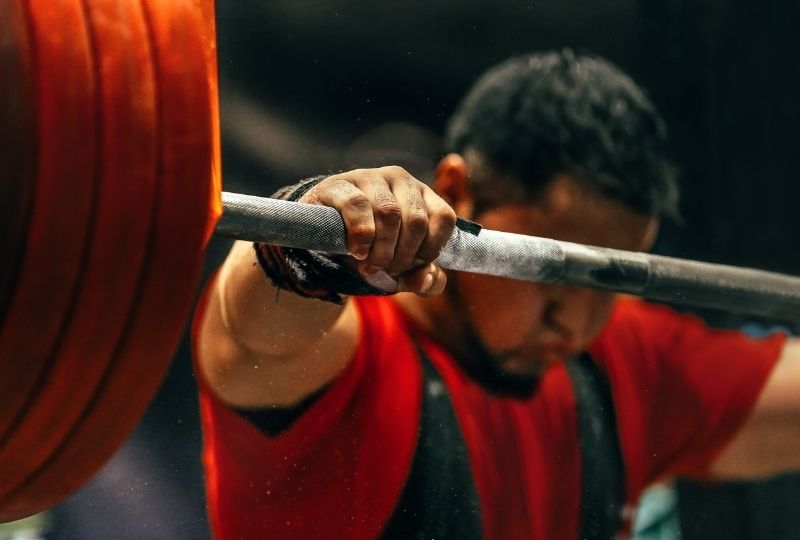
Hand grip strength is important not only when lifting weights in the gym. Athletes in many different sports rely on sufficient grip strength to optimize performance and prevent injury.
Here is a brief list of some sports where a strong grip is critical to athletes’ success:
- Baseball: Pitching, catching, and of course, hitting home runs
- Golf: Driving, putting control, endurance
- Tennis: Serving, forehand, backhand, two-arm swings
- Olympic weightlifting: Clean and press, snatch movements
- Wrestling: Grappling, throwing, body control, locks, and submissions
- Rock climbing: One and two-handed hanging, pulling, unique grip positions
Many other sports could be added to this list. But hopefully, this gets the point across that grip strength is a must-have ability for competitive athletes.
6. Squeeze out stress.
Related: Does Flexing Build Muscle?
Using a grip training device like a hand gripper or ball is good for your physical health and your mental well-being.
Periodically squeezing a grip trainer creates tension in the muscles. When the muscles relax, this tension release carries over to other parts of the body and mind.
While stress balls have been used for a while now to relieve symptoms of stress and anxiety, they may also help with improving mental clarity.
Research has found that school learners experienced improved attention spans, attitude, and class interaction when using a stress ball.
These types of devices are portable and easy to have on hand when you need them throughout the day.
7. Gain impressive vascularity.
Finally, one of the best benefits of grip training is that it greatly increases the vascularity of your forearms.
The repeated contractions and a high number of repetitions in handgrip exercises force a lot of blood into the area, increasing the size and contractile ability of the blood vessels.
You can achieve a similar effect if you’ve ever been impressed by bodybuilders or fitness influencers who look like they’ve got their own personal Google maps on their forearms.
While body fat percentage, genetics, and, uh, ‘enhancing’ substances may have a part to play in some cases, you can definitely improve your vascularity by incorporating grip training into your program.
Hand Grip Exercise Disadvantages
While hand grippers are a great tool, they are not without their drawbacks.
Firstly, some grip trainers only have one resistance. This can make it hard to progress them past a certain point.
Some models provide adjustable resistance, but there’s only so much you can do when the maximum limit becomes easy.
Another disadvantage when trying to train grip strength is that the skin of the hands can become calloused or irritated when performing heavy or high repetitions.
To combat this, see the section below on training aids to protect your hands when training your grip.
How to Use Hand Grip Strengthener
On the one hand, using a hand grip trainer is reasonably straightforward. Simply grasp the handle and squeeze, right?
While this is true to an extent, you can see in the video that there are quite a few ways to use these devices.
In addition to different hand positions to train the individual fingers and thumb, you can also perform grip squeezes with the wrist and elbow in different positions.
For example, squeezing the grip trainer with a bent elbow and flexed wrist will emphasize the work of the forearm flexors.
Alternatively, gripping with a straight arm and extended wrist will target the back of the forearm to a greater extent.
As for specific training parameters such as sets and rest, see the section describing the appropriate recommendations below.
Hand Gripper Exercises for Strength
Related: How Much Does A Trap Bar Weigh?
This section will overview the best exercises to improve your grip strength.
These exercises will be featured below in the hand grip workout routines, so refer back here if you need to check how to do one of the exercises.
Hand Grip Trainer
Pick a most comfortable grip for your hand that targets the specific area of the forearm you’re looking to work on.
Simply squeeze the handle as hard as possible before relaxing the grip and repeating.
Farmer’s Carry
Grab a set of heavy dumbbells, kettlebells, or anything that you can hold that will challenge your grip.
A farmer’s carry simply involves walking with the weights until you can’t hold on anymore.
Keep good posture throughout the walk, with the chest up and core engaged.
Try these while holding weight plates with a pinch grip for an added challenge to the grip.
Dead Hang
Find a pull-up bar and take a shoulder-width, overhand grip to perform the dead hang. Hang your full body weight from the bar for as long as possible.
You can do this exercise for an added challenge while holding onto towels hung over the bar.
Who knows? One day, this might save your life if you’re hanging from a ledge (or helicopter ladder if you’re starring in an action movie).
Forearm Complex
This is a superset of six back-to-back exercises consisting of the six wrist ranges of motion. These are:
- Wrist extension
- Wrist flexion
- Forearm supination
- Forearm pronation
- Radial deviation
- Ulnar deviation
This circuit can be done with a dumbbell, mallet, or even while holding an isometric squeeze on your grip trainer.
This combination of moves will hit all the muscle groups in the forearm in one set.
Battle Rope
Related: 12 Battle Rope Exercises
The battle ropes are a great way to train the directional grip, as opposed to the hook or power grip used in many other exercises.
The alternating waves, or ‘drummer’ exercise as I like to call it, is an excellent move for developing strength and endurance in the wrists and forearms.
Grip Strength Training Equipment
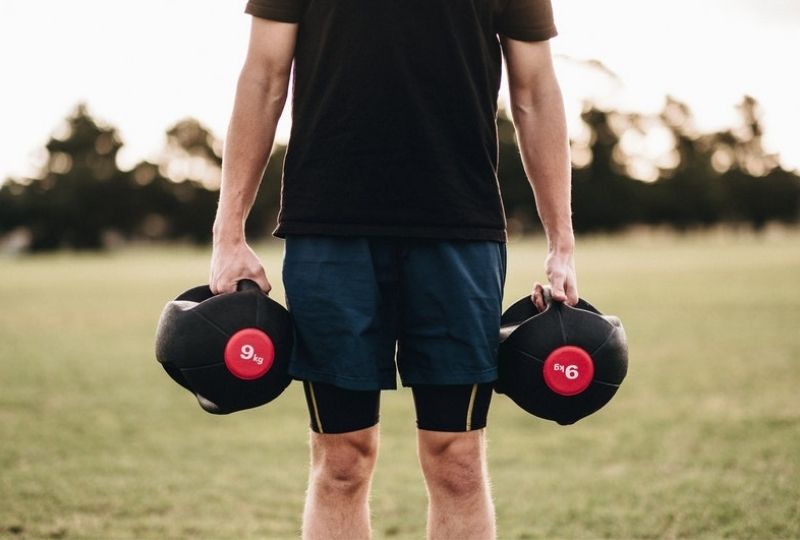
When it comes to developing your grip strength, there is no shortage of options.
The following equipment can be used in different ways to develop a powerful grip:
- Grip trainer
- Grip balls
- Fat gripz
- Towels
- Battle ropes
- Pegboard
- Fingerboard
- Barbell / dumbbell / kettlebell
- Pull up bar
There are even more unique pieces of equipment out there to build your grip strength, so explore and find what works best with your routine.
Training Aids for Increased Grip Strength
As mentioned, it’s important while cultivating thick, powerful forearms not to cause damage to your hands.
If you’ve been training for any length of time, you’ve probably experienced some torn skin in your palms or calluses at the base of your fingers.
You can use training gloves or chalk to protect the skin while working on your grip to combat this.
Some sprays or tapes can provide a barrier between your hand and the equipment.
However, this doesn’t include things like lifting straps or hooks, as these would be counterproductive in building your grip strength.
Hand Gripper Workout Routine
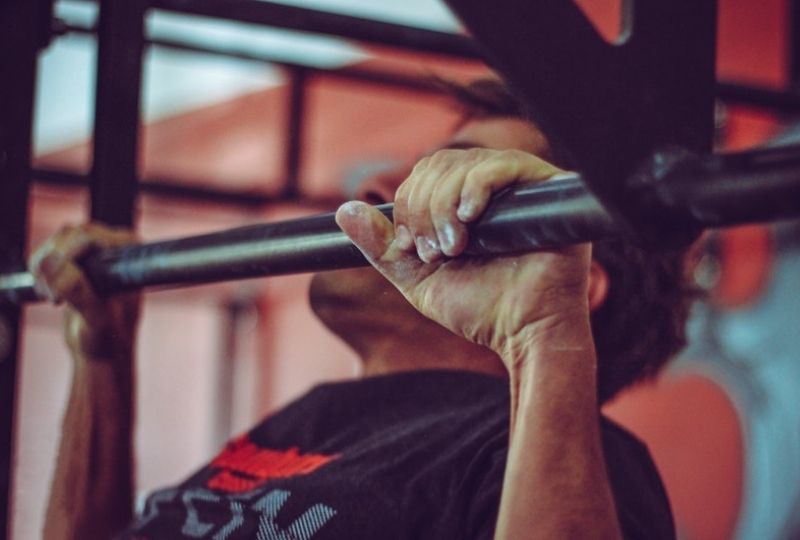
We have a couple of ways to add grip training into your routine.
This section includes a full grip and forearm session if you want to dedicate a separate workout to this goal.
Alternatively, there is a breakdown of how to add some grip strengthening work to your existing workouts, making sure you’re training your grip three times per week.
Complete Hand Grip Workout
| Exercise | Sets x Reps | Rest |
| Farmer’s carry | 3xMAX (1 min max time) | 1 min |
| Dead hang | 3xMAX | 1 min |
| Forearm complex | 3×10/10/10/10/10/10 | Alternate sets between arms |
| Battle rope ‘drummers’ | 3×30 sec | 30 sec |
| Grip trainer | 3×50 | Alternate sets between arms |
Post-Workout Grip Strength Finishers
| After Workout | Exercise | Sets x Reps | Rest |
| Push / Chest / Upper body / Full body 1 | Farmer’s carry | 3xMAX (1 min max time) | 1 min |
| Grip trainer | 3×50 | Alternate sets between arms | |
| Pull / Back / Upper body / Full body 2 | Dead hang | 3xMAX | 1 min |
| Battle rope ‘drummers’ | 3×30 sec | 30 sec | |
| Legs / Lower body / Full body 3 | Forearm complex | 3×10/10/10/10/10/10 | Alternate sets between arms |
Hand Gripper Sets and Reps Recommendation
The muscles used for grip strength work just like any other muscle group, in that they respond to different training stimuli in similar ways.
You can see in the example workouts that most exercises involve three sets as a starting point.
As for repetitions, this depends on the exercise and the goal.
For example, farmer’s carries and dead hangs require isometric contraction for as long as possible to build isometric strength endurance.
The forearm complex exercises are 10 reps each, aiming to build muscle in the forearms.
Finally, the battle ropes and grip trainer perform many repetitions over some time to burn out the muscles and maximize blood flow.
Depending on your training level and goals, these ranges can be modified and progressed.
How to Measure Hand Grip Strength
To accurately measure grip strength, you can use a dynamometer device.
These devices are relatively commonplace in sports and clinical settings, and may even be accessible in your local gym.
Hand grip strength testing is widely used to measure upper body strength and endurance.
Be sure to consult with a qualified professional to measure your grip strength accurately.
You can track your readings over time to ensure you are within optimal ranges and see if you are improving with consistent training.
Frequently Asked Questions
See Also: Smith Machine Bar Weights
Do grip strengtheners work?
Grip strength trainers can be an effective way to improve your forearm strength and endurance.
They also do a good job of promoting a lot of blood flow to the hand, wrist, and elbow tissues.
While they can be limited in terms of progressing as you get stronger, hand grippers are a great starting point for grip strength training.
How often should I use hand grippers for best results?
If you are predominantly using hand grippers as your training method, you can treat this training as you would with training muscle endurance for any muscle group.
As mentioned in the example grip strength workouts, you can perform three sets of grip trainer squeezes.
While the template states 50 repetitions, this is just a guideline. You can push until fatigued if you prefer.
Perform these three sets up to three times per week. Leave at least one day between sessions for recovery.
Do hand grips build muscle?
While traditional hand grip trainers may initially build a moderate amount of muscle with the right diet and overall training, they are not necessarily the best way to create muscle hypertrophy.
You can combine this device with some of the additional grip exercises mentioned in this article to create muscle growth in your forearms.
The forearm complex in the exercises above would be the best exercise to increase forearm size.
This includes the six movements of the wrist at a weight and rep range conducive to stimulating muscle growth.
The best overall growth will probably come from heavy holds, wrist exercises, and grip endurance.
How strong should my grip be?
If you’re the kind of person who likes to have a standard to measure against, you can use the grip strength norms for gender and age group.
See this article for a full table but for convenience, here are a couple of the mean grip strength readings:
*Note: Grip strength reading in kg, for the right hand
Men 20-29: 47
Men 30-39: 47
Women 20-29: 30
Women 30-39: 31
You can measure your grip strength using the methods mentioned above.
See Also: Average Bench Press
Now go get a grip!
There you have it. Now you know what the benefits of hand grip exercises are.
So, what do you think about our tips? We hope this article helped provide some helpful advice and practical applications for hand grip training.
Let us know if you train your grip strength and which exercises or equipment you use!
Also, if you have any friends or family members who would benefit from a stronger grip, make sure to share this article with them.

